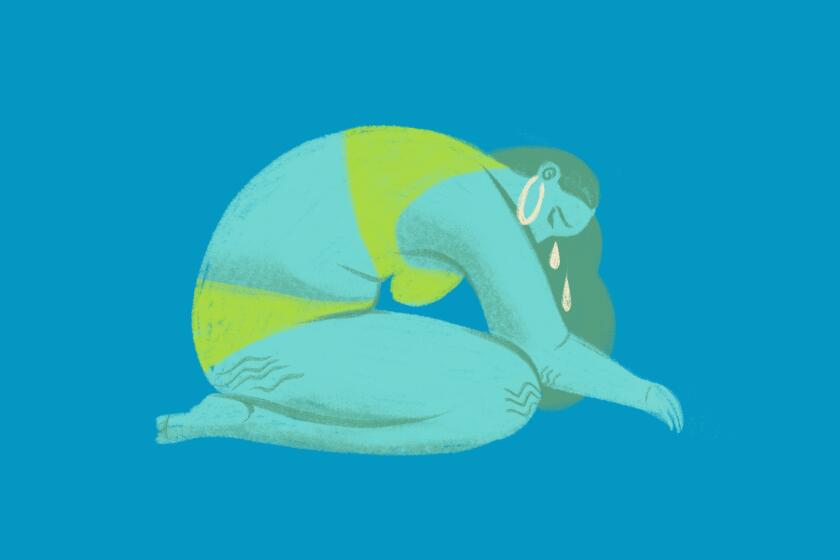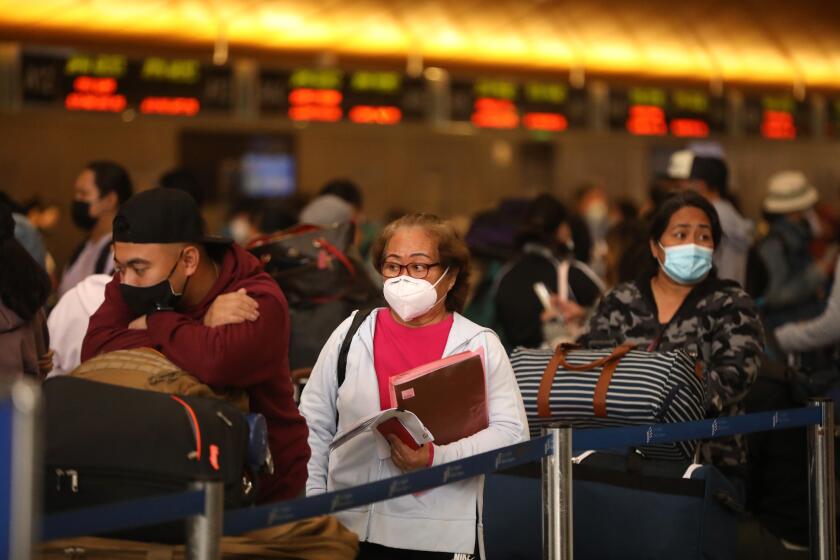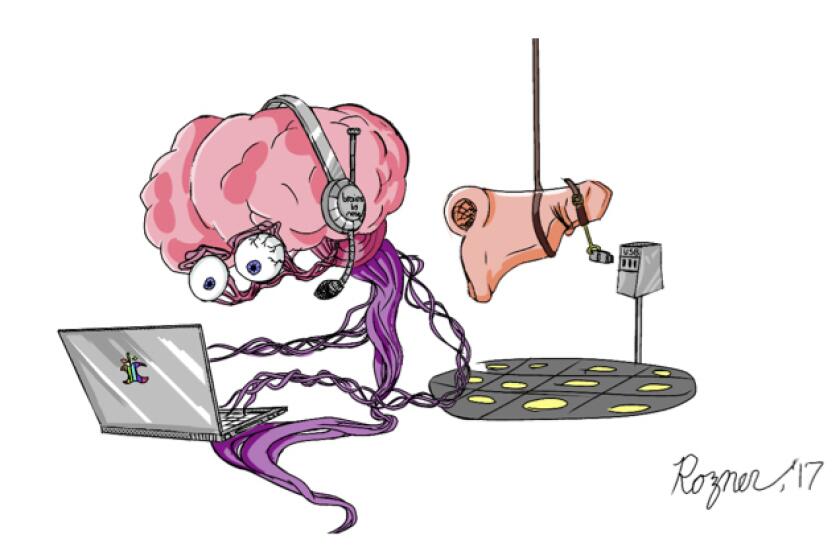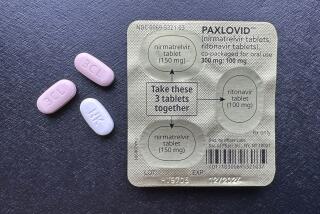With COVID surging again, here are eight tips to help with your Omicron anxiety
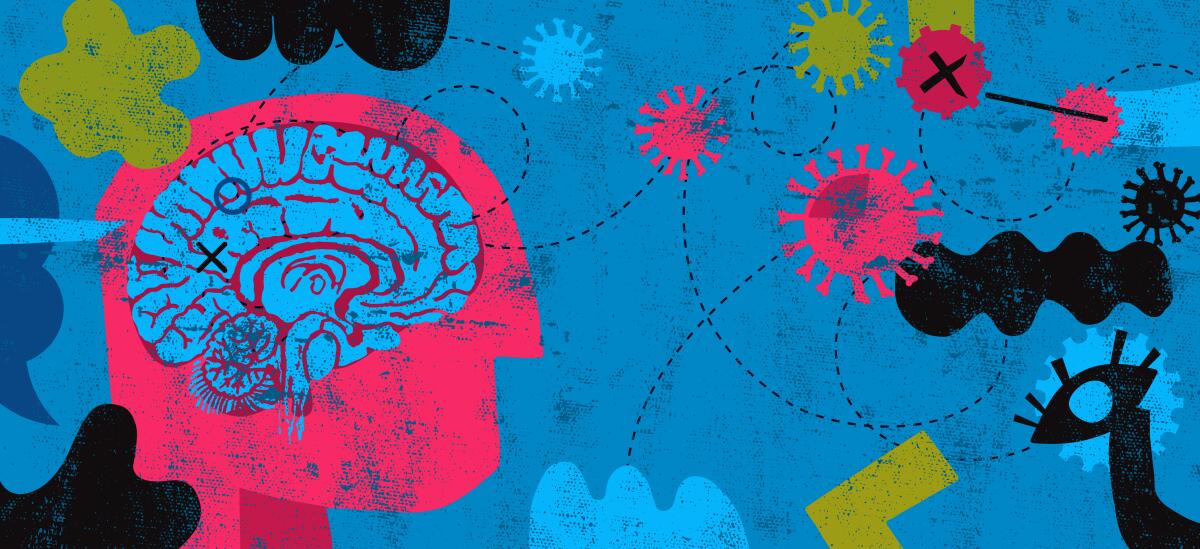
- Share via
You know that moment in “Groundhog Day” — or “Edge of Tomorrow,” “Happy Death Day” or “Palm Springs,” depending on your pop culture preferences — when the main character has gone through too many time loops, the initial adrenaline has worn off, and insanity is about to set in?
Is that how you feel right now? We were primed for a normal-ish holiday season until Thanksgiving showed up with an uninvited guest: Omicron, the latest and most contagious coronavirus variant. As we listen to Christmas songs (that have been playing since before Thanksgiving) on KOST-FM (103.5) and consider whether we should cancel our holiday plans, we are once again left wondering what the coming months will bring.
We’ve been here before. And that kind of repetition, when it’s out of our control — like when we’re watching COVID-19 cases rise again — can make us feel anxious.
But repetition — when we’re calm, analyzing what’s within our control and working on better routines — is also a tool to help manage anxiety.
Here are some reminders about what causes anxiety and tips on how to approach uncertainty with clearheadedness.
The coronavirus pandemic, wintertime, the daily stressors of life — it all can take a toll on our mental health. Here are some resources to help you understand therapy, how to find a therapist and more.
1. There are real threats and imagined threats
Omicron is a real concern, especially if you are unvaccinated or have plans to be around a lot of people. It’s a real threat to the hospital system that is preparing to be overwhelmed. Long COVID is a real possibility for otherwise healthy people who get infected.
But everyone has a different situation, so what is your specific risk? Are you elderly? Do you have preexisting conditions? Who is in your inner circle, and are they vulnerable?
It can be helpful to keep updated on what’s happening nationally and globally, but what are your local case counts? Do you work at a job where your risk of exposure is higher? Are you working at home? Do you have plans to fly?
Make sure you’re responding to your real threat and not getting overwhelmed by a story you read on Twitter that you’re not sure how to contextualize or an apocalyptic future drawn wholly from your imagination.
2. Identify your emotional triggers
A trigger is something that causes an emotional response. Often, it’s something we can’t control, like a toddler screaming, the end of a relationship or the anniversary of a death.
Are news stories with panic-inducing headlines a trigger for your anxiety? While it’s important to know the latest safety guidelines, you don’t need to spend hours consuming articles, podcasts, TV shows and TikTok videos that tell you the same things. Instead, consider signing up for a newsletter from an organization you trust that gives you all the important highlights once a day.
Understanding our triggers helps us see them for what they are, so we can better manage things that stress us out.
If you’re traveling by plane this holiday season, here are tips for reducing your COVID-19 risk as much as possible at the airport and on your flights.
3. Notice the physical signs that you’re getting anxious
The days can be long and busy, and sometimes we don’t notice how much we’re affected by our day-to-day pressures. We might have past traumas we’ve been avoiding that are starting to cause problems. Sometimes it’s easier just to focus on the million things on our to-do lists.
If we’re not careful, our bodies will tell us something is wrong by crashing. But if we pay closer attention, we can see the signs beforehand and remember to rest.
So do you have a headache? Is there a tightness in your chest? Is your jaw sore because you haven’t noticed how much you’ve been clenching your teeth? Your body is sending you a signal, and you need to heed it.
4. Figure out your emotional cycles and patterns
According to psychologist Marlene Valter of the mental health services company AnaVault, when we perceive a threat, it activates our sympathetic nervous system, triggering a fight-or-flight response. Other parts of our brain shut down so we can cope with the stress in front of us.
When this happens, “We link memories and emotions and thoughts to that danger,” Valter said. “So when we see something similar, we have learned to think that is a dangerous thing.”
Sometimes the new danger is real. Other times, it’s an unhealthy habit, and we might be unnecessarily reacting to a past trauma.
A common exercise used in cognitive behavioral therapy involves asking a client to identify unhelpful thoughts, patterns and behaviors. So think about times you’ve been anxious recently — what happened, what triggered it, how did you feel physically and emotionally, what did you do (or want to do), and what happened next? Once you identify the cycles, you can work to break the ones that lead to anxiety.
When you’re worried yourself, how can you make your child feel comfortable talking to you about their mental health struggles?
5. Think about whether different actions will give you more helpful results
There are many things we cannot change, such as the arrival of the Omicron variant. But sometimes we can change our actions to put ourselves in situations that are less worrisome.
Get vaccinated (including your booster shot). Perhaps you were confused by the mixed messaging about how necessary the booster shot was, or you wanted to take a stand in favor of the U.S. sending more vaccine to the developing world. But currently, the research is showing that the COVID-19 booster vaccine is your best protection against Omicron, and the Centers for Disease Control and Prevention says all adults should get it. Sign up at myturn.ca.gov.
Get tested before you meet with people, especially if you’re going into high-risk situations or meeting with people in high-risk groups. You can get tested at your doctor’s office, a county testing site or a pharmacy. At-home COVID-19 tests are in high demand and short supply with the winter surge — a situation that may not improve until next month, when the Biden administration plans to make 500 million test kits available to Americans for free — but here’s how to get them and how to use them properly.
President Biden plans to beef up at-home testing and more.
Other actions to consider. Is there a more compassionate approach you can take to talking to your vaccine-hesitant loved ones about getting their first dose? Can you buy better masks? Can you spend more time learning about potential positive developments — such as the Pfizer pill that is performing well against Omicron because it blocks a key enzyme that viruses need to multiply in the human body — instead of reading only about doom and gloom? Or eat better, get more sleep and exercise?
Think about what you can do, instead of feeling overwhelmed by what you can’t.
6. How to manage your racing thoughts
Is there always an internal monologue in your head? Some people naturally have a more active, anxious mind than others. In a Psychology Today story titled “How to Tame Your Anxious Mind,” therapist Michelle P. Maidenberg said she likes to remind her clients that you have thoughts and feelings, but you are not your thoughts and feelings.
There’s a difference between thinking something and acting upon it, she explained. Sometimes it helps just to observe the thoughts, assess them mindfully and let them pass without judging them.
Maidenberg said that the struggle to get rid of unwelcome thoughts or wish them away can actually perpetuate an even more exhausting cycle “where we end up challenged by having thoughts about our thoughts, feelings about our feelings, thoughts about our feelings, and feelings about our thoughts.”
Just like you wouldn’t love being in a time loop, beware of mind loops.
“It can be challenging to have self-compassion when all of that ‘noise’ is surfacing, causing us to question, defend against, and desire to avoid ourselves,” she wrote.
Psychologist Marlene Valter runs a resiliency training for peer-support workers, so those with a history of mental illness can protect their own mental health while helping recovery patients. Here are some tips for anyone facing daily stressors.
7. Focus on what you can control and accept what you cannot
When licensed clinical social worker Courtney Tracy talked to The Times in August, the country was in a similar place regarding the pandemic, as the uncertainty surrounding the Delta variant threatened our return to normalcy. She emphasized the importance of knowing the difference between what you can and cannot control — and accepting that.
“There isn’t really a way to get through this time period other than generally accepting that we are mortal, and that we exist on a planet that is uncertain and unprecedented things happen,” she said. “When we push away things that we wish were not happening, oftentimes we’re also pushing away the emotions attached to those things. As we accept what’s happening, we also open up the door to experience what we’re feeling about it, and that not only makes us move more in the direction towards healing but it also can prevent [us] being traumatized.”
8. Be kind to yourself
We’re about to enter our third year of the pandemic. You don’t feel bad because something is wrong with you. You feel bad because it’s been bad. You feel anxious because Omicron is anxiety-inducing.
Figuring out how to manage your anxiety and which habits work best for you requires experimentation. Some things will work, some won’t. You’ll have setbacks. It’ll take time. Be patient with yourself.
Also, some anxiety is good. It’s what causes us to pay attention, it protects us from danger, it motivates us, and it helps us have empathy for those around us.
More to Read
Sign up for The Wild
We’ll help you find the best places to hike, bike and run, as well as the perfect silent spots for meditation and yoga.
You may occasionally receive promotional content from the Los Angeles Times.
